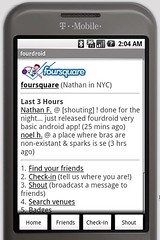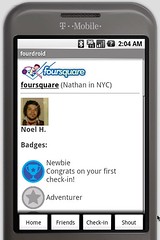Social Activism Using Mobile Technology
H79.2800.1 Call#76846 Tues 6:30pm to 9:00pm Staff
ITP Course Listing
We all know how mobile phones and ubiquitous computing have changed communication and networking in our personal lives, but do you understand the affect they have had on political and social justice movements around the world? More importantly, do you know how this has been done, so that you can apply these techniques when your own moment to raise your voice comes? While Obama Vice-Presidential SMS announcement was a milestone for politics in the U.S., activists and organizations around the world have been using mobile phones for years to get their message out, organize their communities, safely communicate under authoritarian eyes and save lives in times of crisis.
Through studying historic, global uses of mobile technology and then teaching you how to use and apply these techniques, this course will give you the power 2B THE CHNG U WNT 2 C. The source will study and apply the use of SMS capture and broadcast systems (FrontlineSMS/RapidSMS), mobile crisis & event reporting tools (Ushahidi, VoteReport), Bluetooth broadcast systems, pirate Wifi mesh nodes, helmet-cam mobile phones and wearable UMPC/NetBook video broadcast systems. The course will also study about security and privacy of mobile phones and the possibility for open-source telephony. While the focus will be on the cutting edge, we’ll also review the historic importance of police scanners, HAM radio, walkie talkie radios and other “old school” tools that have played important roles in the civil rights movement, the environmental movement and more. Actual organizations, causes and activists will be invited to speak to the class (both in-person and via Skype from around the world) to offer their stories and observations. Opportunities to work on projects with these movements will be presented to students.
Some experience programming mobile devices (J2ME, iPhone, Android) will be useful, but not necessary. Experience in setting up at least one web server/application or blog system preferred. Having a cause you work or identify with or at least something you care about will be very important. Case studies to include:
- The use of SMS message forwarding and multimedia attachments to share the Philippines version of the Nixon tapes
- Streaming live video from Mt. Everest and the Great Wall of China (while hiding from the police)
- Secure, Anonymous, Private Mobile Phones via open-source Cryptophone software and Google Android
- Reporting in Crisis: Kenya, Congo and Gaza eyewitness acount tracking via SMS and Smartphones
- Election Protection: making sure your vote counts – activism for the common citizen
- Crowd Control: Organizing and directing mass mobilizations through Twitter and SMS
- Virtual Telephony: Asterisk, Google Voice, Skype and more, and why making phone numbers virtual and disposalable matters
- From Tsunami’s to Twitter: did you know the first micro-blogging via SMS that mattered happened in the aftermath of the 2005 tsunami?



